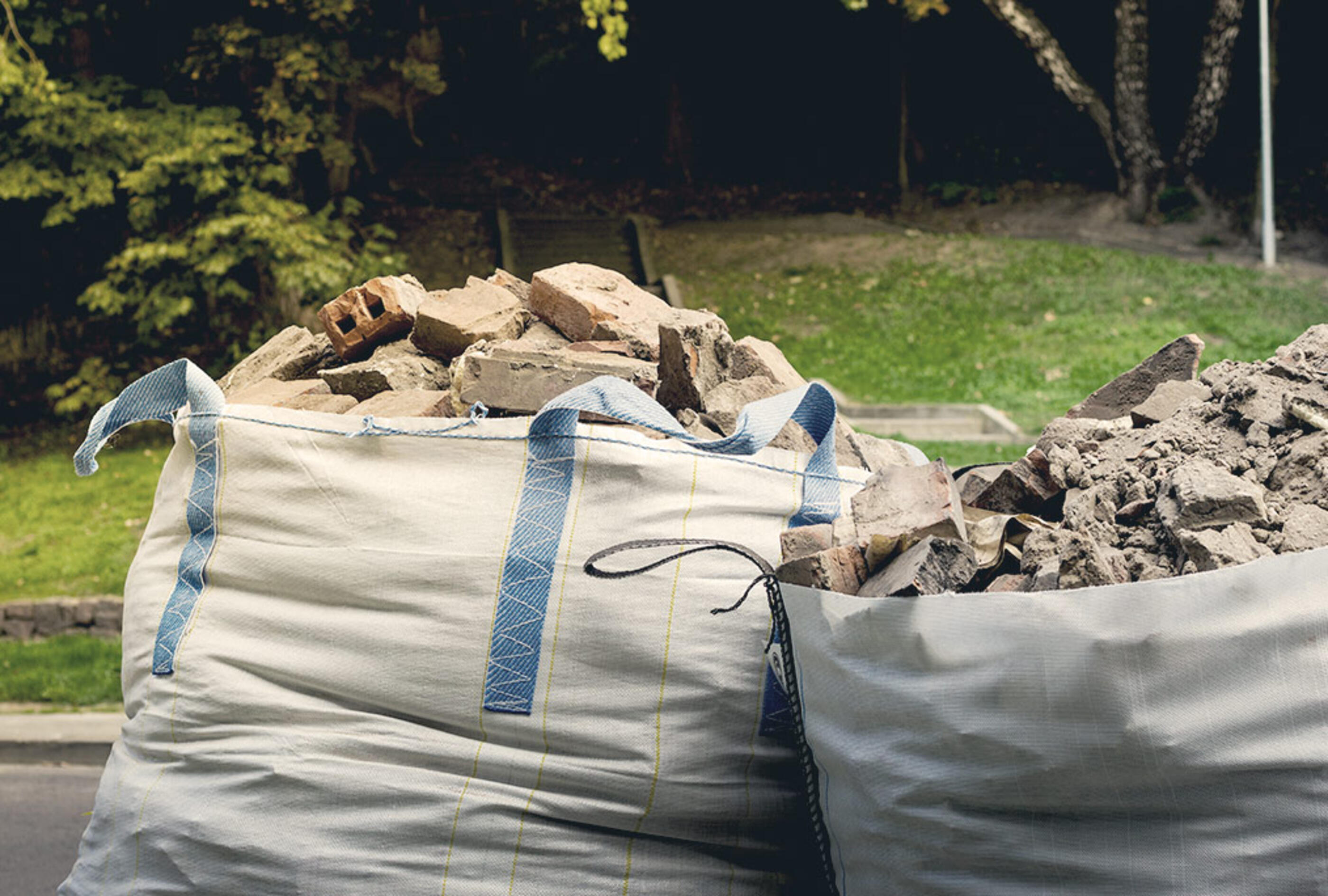How to empty a Big Bag?
The Big Bag is a product particularly appreciated by professionals in the construction and industrial sectors for waste disposal and transporting various materials. There are numerous models of bags compatible with different materials such as asbestos, powder, or debris. Depending on the nature of your professional needs and your handling equipment, you can also choose from several types of filling methods according to how you want to load a Big Bag. However, you should know that it's even possible to choose the drainage method that suits you best. The discharge chute is ideal for powders or pasty products, and you can also opt for a complete open-top bag or a bottom opening. If your Big Bag doesn't have an opening system, don't worry, OTEXIO explains how to empty it through tearing. Finally, we provide information about various industrial machines specialized in bag unloading.
Discharge chute (Drainage)
The discharge chute (drainage) is a very practical solution for emptying the contents of your bag. Widely used for the transport of bulk products, it's ideal for directing the material to the bottom of the Big Bag without product losses. This type of bag, with variable volume and dimensions, is equipped with a fabric tube used to empty the contents while reducing and controlling the flow. This system also allows partial emptying of the Big Bag. It's possible to close the bag even when it's not completely empty.
With this device, you'll save time and further optimize the use of your industrial products, fertilizers, or seeds. To empty it, simply position your load at a height. Then, you only need to retrieve your merchandise. For your safety or that of your employees, make sure your bag is properly positioned. If you want to equip yourself with Big Bags with a discharge chute, don't hesitate to ask for a quote from us.

Complete open-top big bag
This is the most popular and widely sold type of bag. This type of Big Bag is extensively used in construction. It's ideal for evacuating bulky materials, such as debris, for example. This type of bag is also found with landscapers who dispose of their green waste this way. Given the substantial volume of these materials, emptying from the bottom would, of course, be tedious. Thus, it's not necessary to lift the bag to empty it. However, we recommend ensuring that the ground surface is even to avoid injuries. You can also position it on a pallet for greater stability.
For your safety, remember to wear safety shoes and appropriate attire whenever handling heavy materials. Similarly, when moving the bags, it's better to use a forklift. The Big Bag with a complete open-top is the most economical among all Flexible Intermediate Bulk Containers (FIBCs). At OTEXIO, we offer our customers a range of 16 items with standard dimensions. Our team, concerned about the quality of our products and your feedback, will provide you with the Big Bag that suits your activity.
Bottom opening big bag
This type of Big Bag is extremely convenient for emptying your bag without having to manipulate it. Thanks to a clever security system, you can unload the contents of your bag without difficulties. Like all Big Bags, it has a high capacity in terms of weight and loading volume, but its features also allow users to save time and facilitate handling. To perform the emptying, nothing could be simpler. Once the bag is raised, you only need to disengage the security ties. The entire contents will be immediately poured out. The limitation of this device lies in its inability to partially empty the Big Bag.
Emptying by tearing the Big Bag
Emptying by tearing is another solution for used Big Bags: it's preferred when your Big Bag doesn't have a bottom opening system. Since the bag is completely closed, you'll need to tear it or cut it using a cutter to retrieve its contents. Of course, the bag won't be reusable, and you may lose some of your materials or products during the operation. Moreover, this method is significantly less secure than the two solutions mentioned earlier. Given that the bag's weight is often substantial, there's a risk of getting injured while emptying the materials.
If, however, you have no other choice, two possibilities are available to you:
- Tear the Big Bag from the top. The bag must be stable and positioned flat to avoid it from tipping over.
- Tear the Big Bag from the bottom. For this, you'll need to lift the bag. If you use a forklift, make sure the bag's straps are properly adjusted on the forks of the machine.
Use of specific machines
To unload your Big Bags, you can also use an unloading station that will be very useful for optimizing the time spent on handling. This device is valuable because it allows no contact between the technician and the stored product. The unloading station is particularly advantageous for companies working with materials considered toxic or harmful to employees' health. There are three types of stations:
- with sleeves hopper that allows for quickly suctioning the bag's content;
- with flap valve that facilitates emptying of powdery materials;
- with diaphragm valve that protects your goods from contamination risks (used in the agri-food industry);
- with seed valve that has a telescopic tube for flow control (used in the agricultural sector);
- with guillotine valve that enables emptying of materials while reducing their granularity.

To determine the type of bag suitable for your equipment or to learn more about Big Bags, feel free to contact our customer service at +33 (0)4 78 52 06 51.